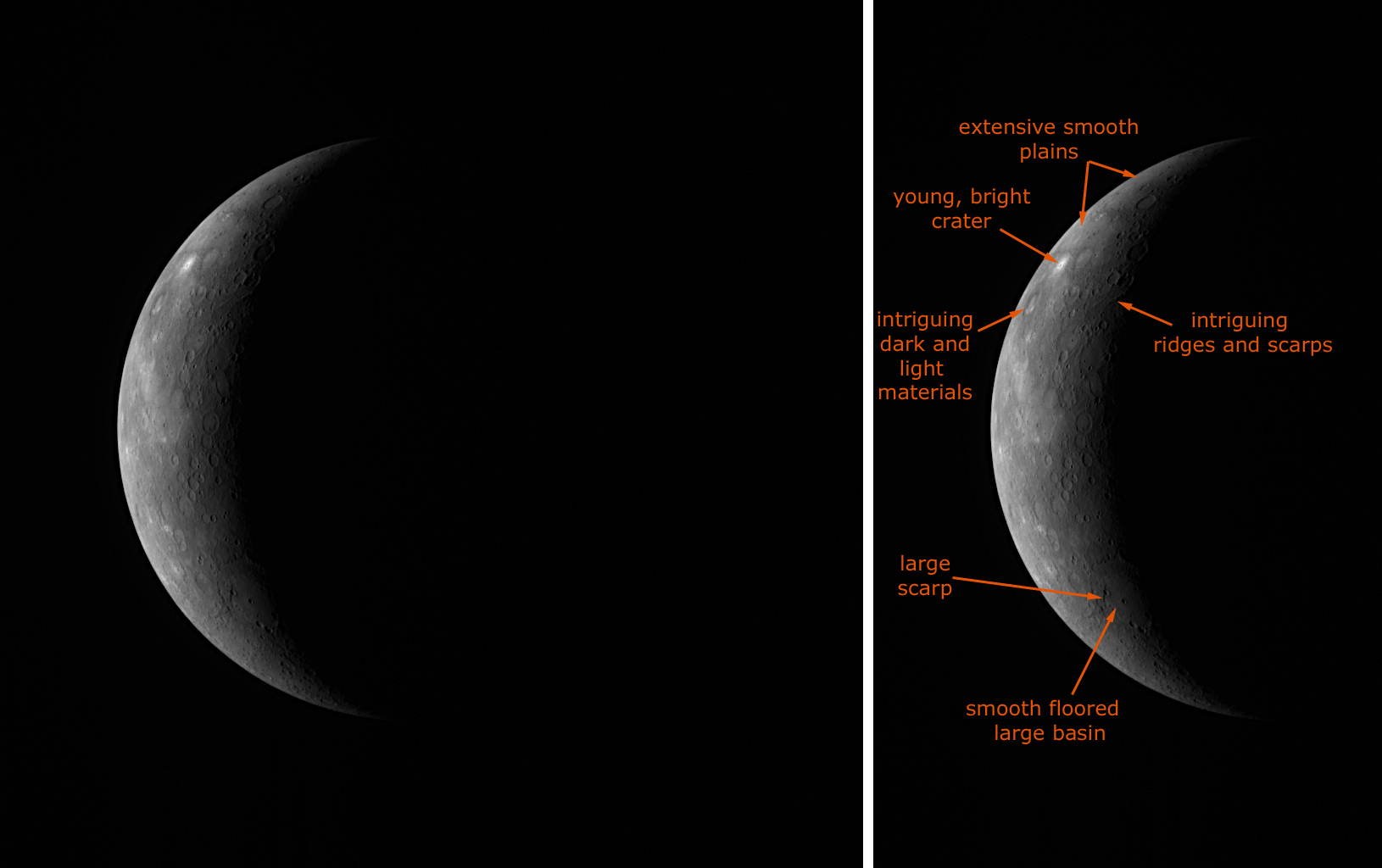[/caption]
This morning at 4:40 am EDT, the MESSENGER spacecraft passed only 200 kilometers (124 miles) above Mercury’s surface as it made its second flyby of the mission. Now, the spacecraft is speeding away from Mercury, continuing its science observations for about 20 hours following closest approach. This flyby should provide the first global perspective of Mercury, as, if all went well, we should have images in total covering about 95 percent of the planet. “This second flyby will show us a completely new area of Mercury’s surface, opposite from the side of the planet we saw during the first,” said Louise M. Prockter, scientist for the mission.
If you’re looking for images and data from the flyby here, sorry to disappoint, but data will be transmitted to Earth only after the completion of all science observations. So, for now, even the MESSENGER science team has to wait. But scientists are already eagerly exploring the optical navigation images acquired just prior to the flyby. Shown here is a Narrow Angle Camera (NAC) image from the eighth and final optical navigation image set, taken about 14.5 hours before the flyby’s closest approach.
As in the earlier seven sets, Mercury appears as a thin sunlit crescent. Though much of Mercury is in darkness in this image, the visible portion had never been seen by spacecraft before. This portion of Mercury’s surface was not viewed during any of Mariner 10’s three flybys or during MESSENGER’s first flyby earlier this year. The newly imaged terrain shows a wide range of geologic features, and scientists have marked them on the image. Near the northern limb of the planet, extensive smooth plains, possibly volcanic in origin, are identified. A nearby crater is the brightest feature visible in the image, suggesting a relatively young age. In the southern region, a large basin is seen with a smooth floor, likely also a product of volcanism. A large scarp that appears to cut through this basin may have formed as Mercury cooled and contracted.
For this flyby, MESSENGER was a “green” spacecraft – meaning it didn’t require the firing of its thrusters to fly precisely where the scientists wanted to make observations. Instead, engineers used a type of “solar sailing,” to guide the spacecraft. “There are no refueling station in interplanetary space, so we’re stuck with the amount of fuel we had at launch,” said principal investigator Sean Solomon during a press conference last week. “Some of that fuel is required to get us into orbit (of Mercury in 2011). By not using fuel on some smaller maneuvers makes the mission more reliable and saves propellant, and allows us to have it in our back pocket when we need it for contingencies.” This is the first spacecraft to use this technique with such precision. Planetary flyby has been described as a complex ‘threading of a needle,’ and the MESSENGER team is getting better and better. The spacecraft’s first flyby was in January 2008, and a third will take place on Sept. 29, 2009. Orbit insertion will be on March 18, 2011.
We’ll post the MESSENGER images from this second flyby as soon as they’re available.
Source: MESSENGER website


“Orbit insertion will be on March 18, 2001. ”
Should read Orbit insertion will be on March 18, 2011… Just a heads-up.
Thanks, Astrofiend for the eagle eyes. It’s been fixed.
Nancy